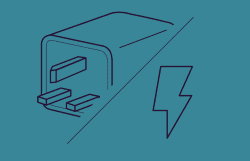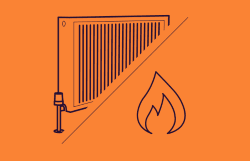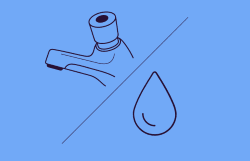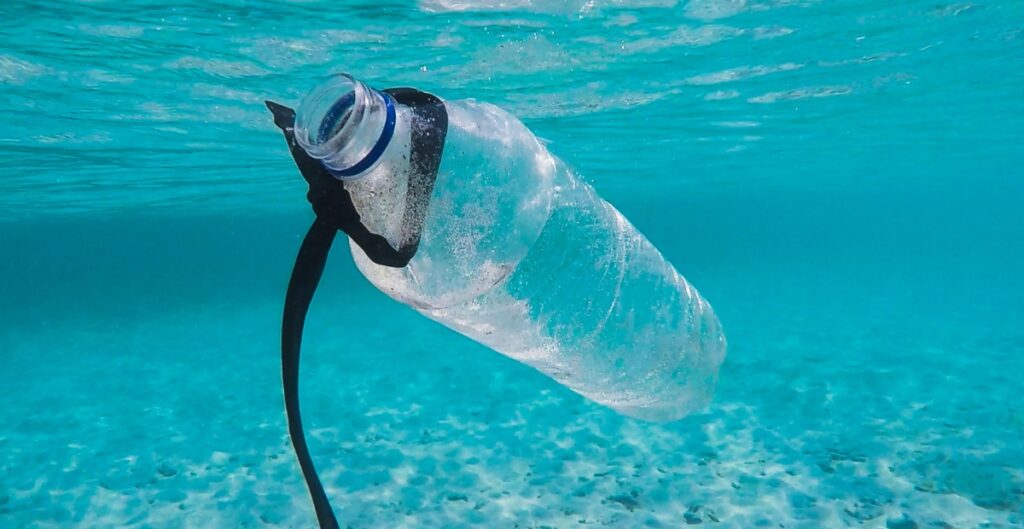In today’s environmentally conscious world, businesses are increasingly recognizing the importance of waste reduction and sustainable practices. Not only does responsible waste management contribute to a cleaner environment, but it can also help businesses save significant amounts of money. By implementing effective strategies to reduce waste and recycle efficiently, businesses can minimize their environmental impact while maximizing their cost savings. In this comprehensive guide, we will explore various ways to reduce business wastewater and provide valuable insights on how to save money in the process.
Why should my business reduce waste water consumption?
Reducing water consumption in your business offers several compelling benefits that can positively impact both your bottom line and the environment. Here are some key reasons why your business should prioritize water conservation:
- Cost Savings: Water represents a significant operational expense for many businesses, especially those that rely heavily on water-intensive processes or have large-scale water usage. By reducing water consumption, you can effectively lower your water bills and operating costs, resulting in direct financial savings for your business. Implementing water-efficient practices can lead to substantial long-term cost reductions.
- Environmental Responsibility: Conserving water is a crucial aspect of environmental stewardship. Water is a finite resource, and excessive consumption puts a strain on local water supplies, ecosystems, and the overall balance of the water cycle. By reducing your business’s water footprint, you actively contribute to the preservation and sustainability of water resources, ensuring their availability for future generations.
- Mitigating Water Scarcity Risks: In many regions around the world, water scarcity is a pressing issue. By proactively reducing water consumption, your business helps alleviate the strain on local water sources, minimizing the risk of water shortages and potential disruptions to your operations. Additionally, demonstrating water efficiency practices can enhance your reputation as a responsible and environmentally conscious organization.
- Regulatory Compliance: Governments and regulatory bodies are increasingly implementing stricter water usage regulations and standards. By proactively reducing water consumption, your business can stay ahead of regulatory requirements, ensuring compliance with water-related laws and avoiding potential penalties or reputational risks associated with non-compliance.
- Enhanced Public Image: As sustainability and environmental consciousness become more prevalent in consumer choices, businesses that demonstrate their commitment to water conservation and responsible resource management can gain a competitive edge. Consumers are increasingly favoring businesses with strong environmental values, leading to enhanced brand reputation, customer loyalty, and positive public perception.
How do I know how much water my business is using?
Determining the water usage of your business requires a systematic approach to gather relevant information.
Firstly, review your water bills over a specific period to understand the total water consumption recorded by the utility provider. Look for patterns or trends in usage data.
Secondly, consider installing water meters at key points within your premises. Water meters provide real-time measurements of water flow and consumption, enabling you to track usage in specific areas, processes, or equipment. This data is invaluable for identifying high-consumption areas and potential sources of water waste.
Additionally, conducting a water audit can provide a comprehensive assessment of your business’s water use.
Engage a water management consultant or expert to evaluate all water-consuming processes, equipment, and facilities. They will analyze current usage patterns, identify areas of inefficiency or waste, and provide recommendations for improvement.
To gather insights on water-related activities within your business, consider conducting employee surveys or interviews. Employees often have valuable information regarding water usage patterns and can contribute ideas for improvement.
Moreover, implementing sub-metering or monitoring systems can track water consumption in specific areas or processes. Sub-metering involves installing individual meters for different departments, production lines, or facilities, providing a detailed understanding of water usage patterns.
By combining information from water bills, water meters, audits, employee engagement, and monitoring systems, you can obtain a comprehensive overview of your business’s water usage. This data-driven approach allows you to identify areas of high consumption, pinpoint sources of water waste, and develop targeted water conservation strategies. Regular monitoring and analysis of water usage data are crucial for ongoing management and continuous improvement in water efficiency.
Step by Step on Water Waste Management
1. Assessing Water Usage and Identifying Waste: Conduct a comprehensive water audit to gain a clear understanding of how water is utilized throughout your premises. Monitor and measure water consumption in different areas of your business, such as manufacturing processes, restrooms, kitchens, and outdoor facilities. Identify any equipment or systems that consume excessive amounts of water and evaluate their efficiency. This assessment will help you pinpoint areas of waste and prioritize interventions.
2. Implementing Water Conservation Measures: a. Fix Leaks and Dripping Taps: Leaks are one of the most common sources of water waste. Regularly inspect plumbing systems, faucets, and pipes for leaks or drips. Repair or replace faulty components promptly to prevent unnecessary water loss.
- Optimize Flushing Systems: Toilets can be a major source of water waste. Consider installing dual-flush toilets, which offer different flushing options for liquid and solid waste, reducing water usage per flush. Alternatively, retrofit existing toilets with flush volume control devices or displacement devices like toilet dams.
- Water-Efficient Appliances: Upgrade to water-efficient appliances, such as dishwashers and washing machines, that carry the Energy Star label. These appliances use advanced technologies to minimize water consumption without compromising performance. Additionally, install aerators on faucets to reduce water flow rates without affecting water pressure.
- Water Recycling: Explore the feasibility of implementing water recycling systems, such as graywater or rainwater harvesting. Graywater systems collect and treat wastewater from sinks, showers, and laundry for reuse in non-potable applications like toilet flushing or landscape irrigation. Rainwater harvesting involves collecting rainwater from roofs and storing it for various purposes, reducing reliance on freshwater sources.
- Educate and Involve Employees: Raise awareness among employees about the importance of water conservation and provide them with practical tips to minimize wastage. Conduct training sessions or workshops to educate employees on water-saving practices, such as turning off faucets when not in use, reporting leaks promptly, and using water-efficient equipment correctly. Encourage employees to take ownership of water conservation efforts and involve them in identifying innovative ideas to reduce water waste.
- Optimize Production Processes: Analyze your production processes to identify opportunities for reducing water consumption. Consider implementing process modifications or adopting water-efficient technologies to minimize water usage. For example, implementing closed-loop cooling systems or process modifications that recirculate and reuse water can significantly reduce overall water demand. Optimize equipment and machinery to ensure they operate efficiently and minimize water usage during production.
- Efficient Waste and Recycling Management: Implement a comprehensive waste management system that emphasizes recycling and waste reduction. Set up designated bins for different types of waste, including recyclables and non-recyclables. Train employees on proper waste segregation practices and ensure clear signage is in place. Collaborate with waste management companies and suppliers that prioritize recycling and sustainable practices, and explore opportunities for waste exchanges or partnerships to maximize resource utilization.
- Monitor Water Usage and Benchmark: Install water meters to accurately monitor water consumption in different areas of your premises. Track and record water usage data regularly to identify trends and anomalies. Benchmark your water consumption against industry standards or similar businesses to assess your performance. Set realistic targets for reducing water waste and regularly evaluate progress to ensure you stay on track.
- Collaborate with Suppliers: Engage with your suppliers to source raw materials and products that are manufactured using sustainable water practices. Encourage them to adopt water-saving measures in their own operations and prioritize suppliers who demonstrate environmental responsibility. By collaborating with like-minded suppliers, you can collectively contribute to water conservation efforts.




